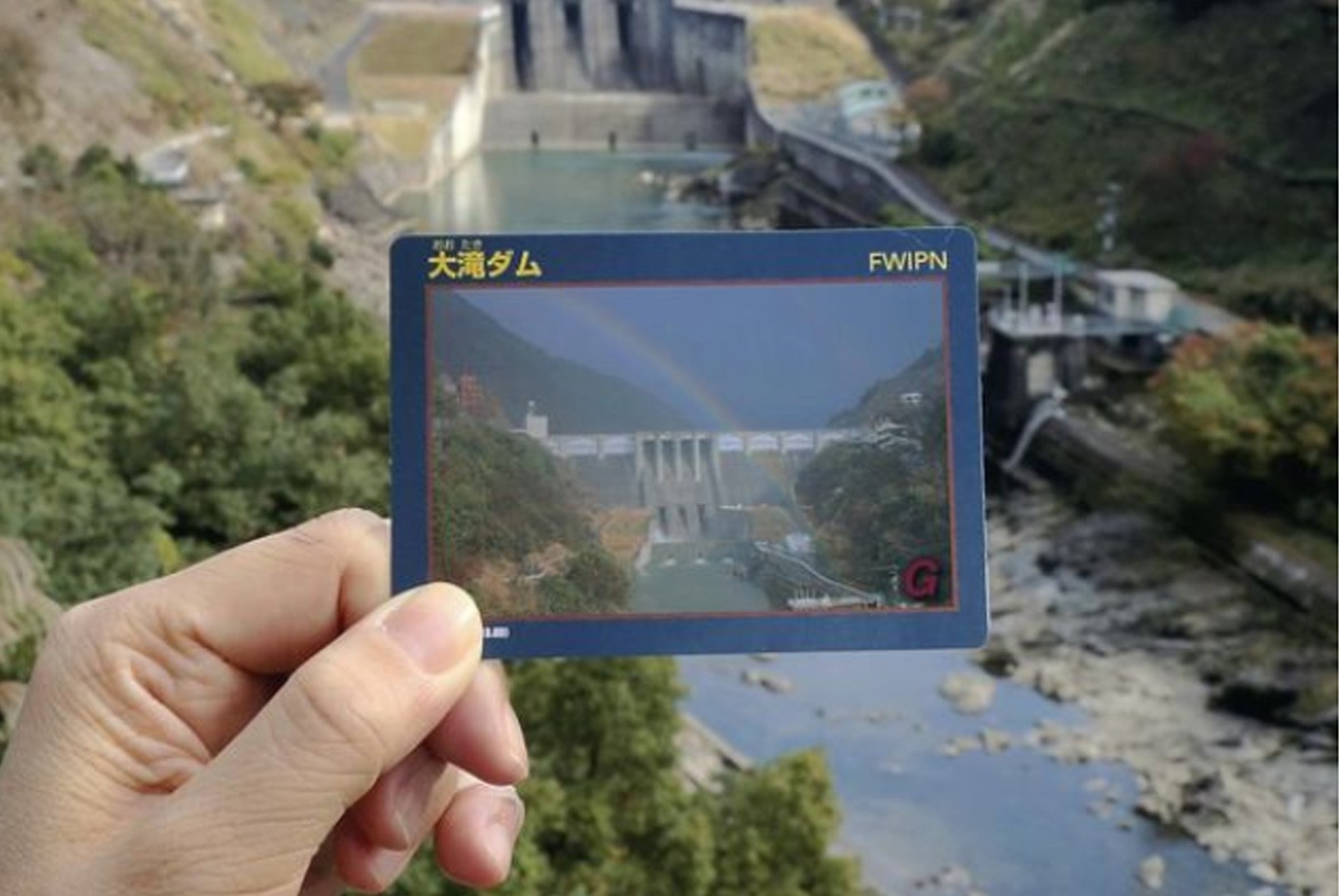Popular Reads
Top Results
Can't find what you're looking for?
View all search resultsPopular Reads
Top Results
Can't find what you're looking for?
View all search resultsCollector cards inspire visits to dams in Japan
Visitors to dams nationwide can receive so-called dam cards from the dams’ management offices.
Change text size
Gift Premium Articles
to Anyone
V
isitors to dams nationwide can receive so-called dam cards from the dams’ management offices. These trading cards feature photos and specifications of each dam. These cards have now become popular collectible items as they cannot be obtained without visiting dams all the way in the mountains.
On a one-day quest to collect these cards, I first headed for Otaki Dam, a facility located along the Kinokawa river system, in the village of Kawakami, Nara Prefecture. As I drove for 90 minutes from Osaka, I found roads running through the steep lines of the Kii mountains. A huge concrete dam eventually appeared in front of me, having an overwhelming presence as the facility stands 100 meters high.
The central government first planned to build Otaki Dam after the 1959 Isewan Typhoon caused serious flood damage. However, it took half a century to complete, in 2013, mainly because of strong opposition to its construction.
(Read also: What to prepare before traveling to Japan)
After walking on the curbed main part of the dam for about 300 meters, I arrived at the management office run by the Land, Infrastructure, Transport and Tourism Ministry, located on the opposite side of the dam lake.
When I mentioned the purpose of my visit over the intercom, an official came out to give me a card.
The front of the trading card, which is about the size of a business card, bears a photo of the dam with a rainbow, along with letters including F and G. These letters indicate the dam’s purpose and type, with F referring to flood control and G meaning gravity dam, according to the official.
The back of the card has specifications and random facts or special features on each dam. On the back of the Otaki Dam card is a section that reads, “The dam’s design featuring a row of arches capping its upper part was selected through a survey for locals, the nation’s first attempt of this kind.”
Elderly couples and motorbike riders are the main groups who visit the office to get dam cards, according to the official. When receiving requests, the office tries to have its staff members respond to visitors face-to-face while also asking them questions such as, “Where are you coming from?”
“I think people’s views about dams have changed, as they used to regard them as something that faced public opposition for their construction, but now consider them as something that can protect people’s lives from disasters,” the official said. “We can feel proud of our job to manage this dam when we see many visitors.”
(Read also: Train worker returning phone becomes international news)
Next, I headed for Takihata Dam, a facility along the Yamatogawa river system, in Kawachinagano, Osaka Prefecture. When I drove for about 20 minutes from the city center, I found a tranquil reservoir. Managed by the prefectural government, the dam can store 9.34 million cubic meters of water, the largest capacity in the prefecture.
I was a bit embarrassed when I found the gate closed for Takihata Dam’s office on the lakeside, but was eventually able to get a card when an official came out to respond to my call on the intercom.
The area near the office also serves as a place of recreation and relaxation for local residents with a camping site and a barbecue facility.
An elderly man from Sakai, Osaka Prefecture, said he often visits the dam for walking and viewing the autumn leaves. Looking curiously at the dam card I had, he said: “If you can get a dam card, it motivates you to do research and visit many other places. I’m also interested in collecting them.”
When I had collected the two cards, I found the sun was already setting. In a time when floods often cause serious damage, I learned that dams play many roles not only in flood control, but also in securing the water supply and generating power.
Dam cards can give collectors a chance to talk face-to-face to officials who maintain the infrastructure, which is apparently one of the best aspects of collecting these items.
Available at 500 locations
(Read also: Popular onsen to visit in Japan)
Management offices for dams used to provide visitors with leaflets, many of which, however, were thrown away immediately. Inspired by trading cards popular among children, the ministry came up with the idea of creating dam cards with the aim of promoting the infrastructure by stimulating people’s interest in collecting items.
Dam cards were launched in 2007 at 111 locations run by the ministry and the Japan Water Agency, an incorporated administrative agency, by following a common design format.
As the items are getting more and more popular, dam cards are available at 500 locations nationwide as of Aug. 1 this year, including those run by local governments.
Dam cards have become popular apparently because they are considered rare as only visitors to a dam can receive one and they are limited to one per person.
Because days and times for distributing the cards can differ depending on dam management offices and cards are sometimes unavailable because alterations are being made, visitors are recommended to call ahead before heading to a dam.
This article appeared on The Japan News newspaper website, which is a member of Asia News Network and a media partner of The Jakarta Post







